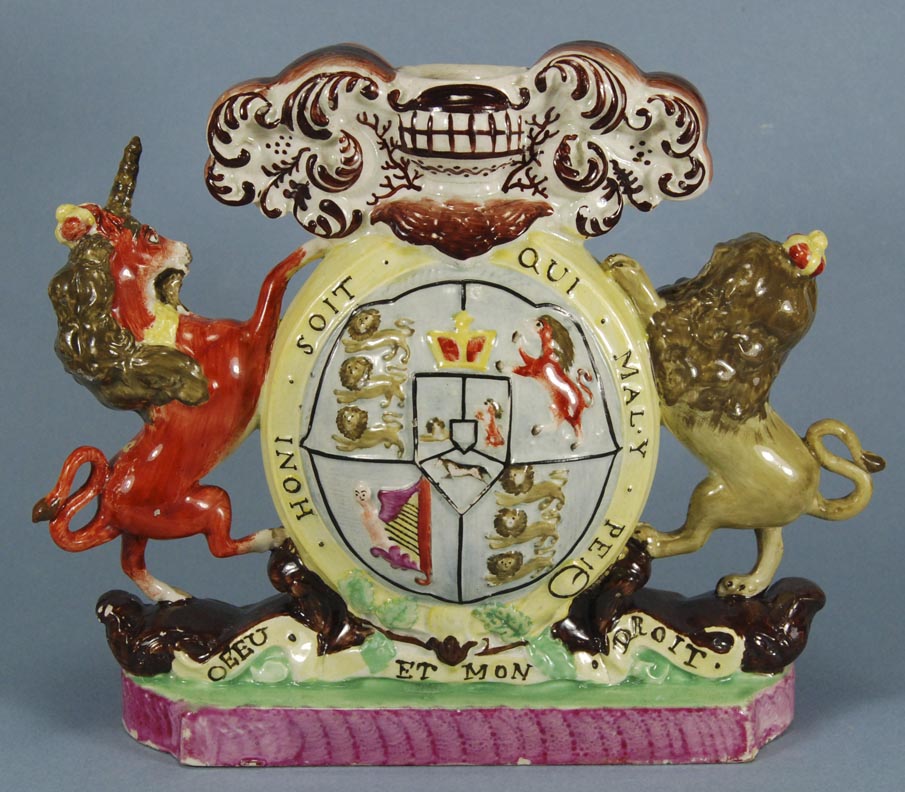Ah well, so much for auction house expertise--it does exist, but, like all good things, it is rare. To top it all, the auction house thought so little of this spill vase that they photographed it from the back. Yes, the catalog image showed the reverse of the vase, flanked by the junk figures. But it so happens that the back of this vase is almost as pretty as the front.
A brief primer on the symbolism here: The shield in the center of the vase depicts England’s three lions passant, a Scottish lion rampant, and an Irish harp. The French phrase “Honi soit qui mal y pense” on a garter surrounding the shield (yes, the potter ran out of room, so it is a little abbreviated!) is the motto of the Order of the Garter, the supreme order of chivalry founded by King Edward III in 1348. At the base of the shield is the French phrase “Dieu et Mon Droit” (God and My Right) that King Richard I is thought to have used as a password at the Battle of Gisor in 1198. In the fifteenth century, King Henry VI selected these words as the royal motto.
What of the lion and unicorn to either side? When King James VI of Scotland also became King of England in 1603, he placed the unicorn alongside the lion on the arms. Traditionally, both animals had been regarded as King of the Beasts and were thought to be deadly enemies. But by placing them beside each other, King James symbolized harmony between England and Scotland. The unicorn is chained because in medieval times a chained unicorn was believed to be a dangerous beast that only a virgin could tame.
The most well-known early earthenware spill vase on this theme is the one made by John Walton.
While we are looking at coat of arms spill vases, I want to remind you of a spill vase that we looked at a long time ago.
Stunning figures like this are increasingly impossible to find. Grab them when you can!

















